Archived Fire Damage Blog Posts
Fire Prevention Week 2023
10/11/2023 (Permalink)
Fire Prevention Week landed on October 8-14th this year. According to the National Fire Protection Association, this year’s campaign “works to educate everyone about simple but important actions they can take to keep themselves and those around them safe when cooking.” This year focuses on cooking fires because they are the number one cause of home fires and home injuries. A majority of these fires occur due to unattended cooking.
SERVPRO® knows the effects that fires can have on a property as a whole. From soot traveling through the HVAC system to ceilings being destroyed by flames, fires can be detrimental to a structure. Fortunately, SERVPRO specializes in fire damage restoration and can help make any disaster seem “Like it never even happened.” Below are some safety tips to adhere to when using kitchen appliances:
1. Unplug all appliances when not in use and make sure the cords are never damaged.
2. Keep oven mitts, towels, packaging, etc... away from the hot stove top.
3. If there is a fire in the oven, turn off the heat and keep the door closed.
4. If using an air fryer, give it space to vent and have airflow.
Fire, Smoke & Soot Damage Restoration
9/19/2023 (Permalink)
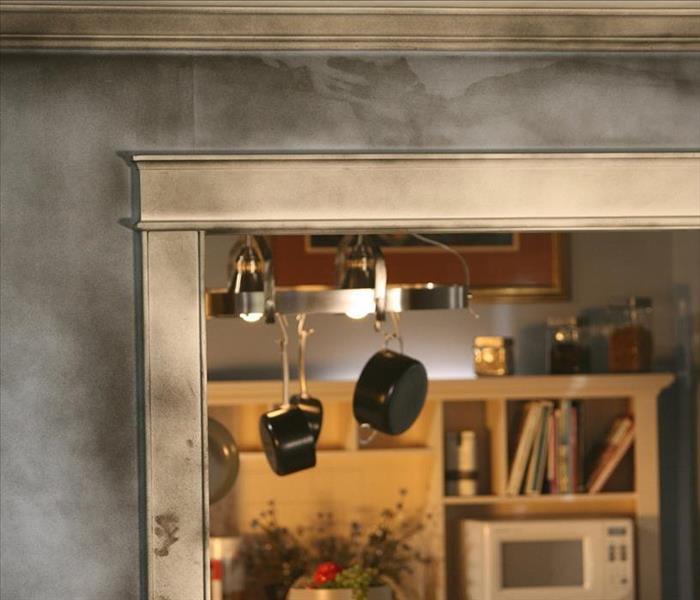 Contact SERVPRO if fire damage occurs at your property.
Contact SERVPRO if fire damage occurs at your property.
SERVPRO® of East Independence/Blue Springs can be there to restore a residential or commercial property following fire damage. Our highly trained professionals have the experience, knowledge and equipment to help make any disaster seem “Like it never even happened.”
A quick response time can make the difference of restoring or replacing a property and personal belongings, so call on our rapid response teams that provide 24-hour emergency service.
SERVPRO’s goal is to restore a property back to its pre-fire condition. We specialize in fire damage cleanup and restoration, smoke damage cleanup, and smoke odor removal. Using advanced technology and cleaning protocols, our teams will remove soot from affected areas and materials to safely restore a space and personal belongings. We are Here to help.®
Household Appliance Fires
9/19/2022 (Permalink)
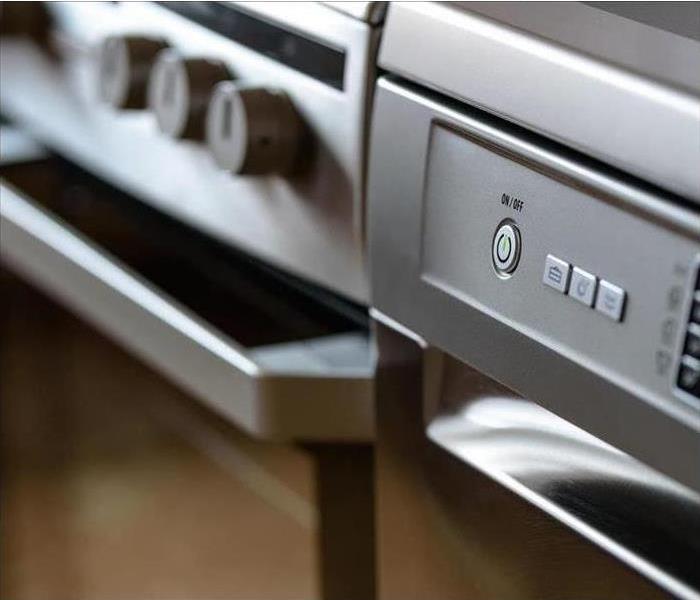 SERVPRO of East Independence/Blue Springs has the expertise to restore properties following fire damage.
SERVPRO of East Independence/Blue Springs has the expertise to restore properties following fire damage.
Household appliances can often malfunction and lead to home or apartment fires. Appliances such as a washer and dryer, stove, dishwasher, refrigerator, or other cooking appliances, are used routinely for our convenience. However, using these items can have detrimental effects if used carelessly, left unattended or malfunctioned. SERVPRO of East Independence/Blue Springs can be there to restore a commercial or residential property following fire and smoke damage and is always Here to help. To prevent a possible fire due to a household appliance and protect your property, here are three things you can do.
- Never leave heated cookware on overnight such as crockpots. Use of these appliances should be supervised in case of a heating element or wiring malfunction.
- Never leave an appliance running while away. Coming home to clean dishes from the dishwasher may sound nice after being away, but electrical issues may stem from heating elements which can cause fire.
- Do not overload your washer or dryer, and always make sure to clean out the lint trap.
Types of Soot
9/16/2022 (Permalink)
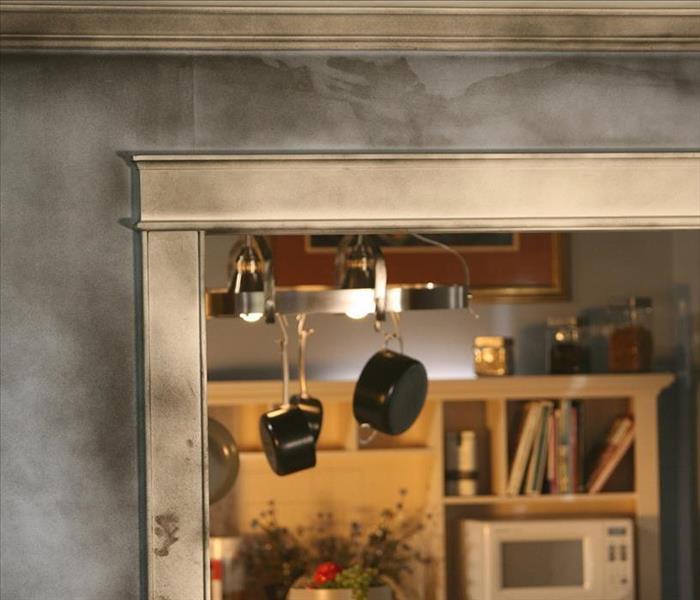 There are various types of soot, and our SERVPRO of East Independence/Blue Springs team can handle cleaning them all.
There are various types of soot, and our SERVPRO of East Independence/Blue Springs team can handle cleaning them all.
Did you know there are various types of soot that are created differently? Our team of SERVPRO professionals knows what to look for in soot damage to be able to restore a client’s contents or property accurately.
Wet Soot
You can find wet smoke residue in fires smoldering at low temperatures with little oxygen. If you don’t look at soot damage on regular bases, soot damage might look similar to you. Our team of professionals has the tools and expertise needed to figure out what type of soot we are working with. Wet smoke residue is sticky and smeary, accompanied by a pungent, acrid odor.
Dry Soot
On the opposite end of the spectrum, you have dry soot damage from an oxygen-rich fire. These types of fire are fast burning, which produces lighter soot particles but causes more damage to surfaces. A fire that produces dry soot contains a less intense scent than the wet smoke residue.
Protein Soot
We have all done it, we will be cooking, and something pulls you away from the stove. Next thing you know, the smoke alarm is going off, and you are rushing to deescalate the situation. Protein soot is created by fires that start from overcooked meat. If the burnt roast leaves you stumped, another indicator of this damage is the pungent odor that will stick around and linger. Our SERVPRO team knows that this type of soot requires extensive cleaning to remove any trace of residue to achieve deodorization.
Often when our clients return to their property after a fire, they feel overwhelmed. Soot damage to them might come across as a complete loss, but our team here at SERVPRO of East Independence/Blue Springs isn’t as easily convinced. Our team understands the steps needed to restore the contents and property back to the preloss condition.
Laundry Room Fire Prevention
11/12/2021 (Permalink)
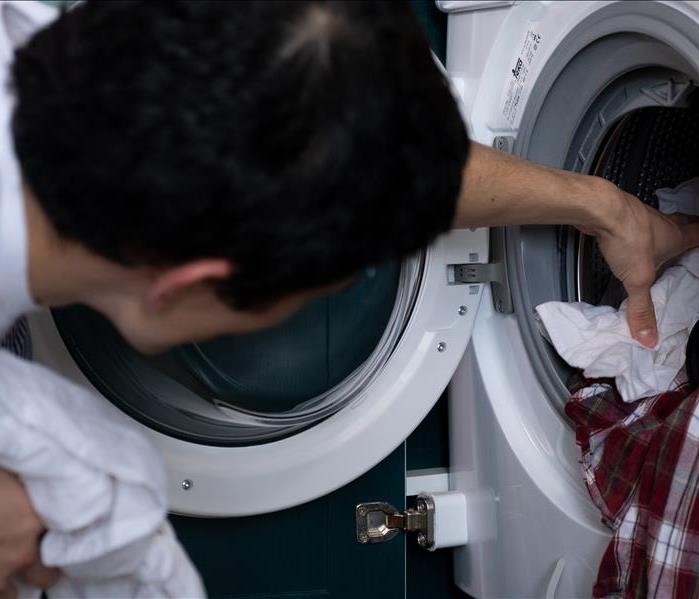 When you are in a rush to complete a load of laundry, you might be in a hurry. Don't overfill the washer as it causes extra strain on the machine.
When you are in a rush to complete a load of laundry, you might be in a hurry. Don't overfill the washer as it causes extra strain on the machine.
A lot of people will admit that doing one laundry could be the most tedious task. You have to organize, clean, dry, and put away one load after another. People might feel like cutting corners by overfilling the machines, others might not check the mechanical structures to ensure its working correctly, and often the person might forget to clean out the lent filter. All of which can create the perfect factors of a laundry room fire. On average, washers and dryers cause about 16,000 house fires each year - however, 31% of the leading causes are failure to clean and perform routine maintenance.
Common Causes of Laundry Room Fires
- Mechanical and Electrical Failure:
Although these types of fires aren’t as common as the others on the list, this is critical to pay attention to. To prevent these types of fires, you should do a general lookover of the machine to ensure all parts look correctly. It’s important to provide maintenance updates to ensure you stop a problem before it happens.
I think we all had overfilled a washer/dryer when we were in a time crunch. When you overload the machine, you are creating extra strain on the mechanisms. Another factor you should keep in mind is the material your putting into the dryer. Materials that aren’t suited for the high temperatures are plastic, rubber, or foam, and if placed in the dryer, these fabrics might melt and cause a fire.
- Dirty Lint and Vent Filters
One of the biggest causes of laundry room fires are clogged vents, ducts, and filters. These filters collect remains like grass, dirt, or other materials left from the washer. Something that you should make an effort at checking is the outside vent. These are the perfect nesting grounds for birds, insects, or rodents, which could cause significant problems if let continue.
Laundry might be your least favorite task to complete. If you make an effort to follow these few tips, you ensure that you don’t fall in danger of a fire.
Proper Ways to Use Space Heaters
11/12/2021 (Permalink)
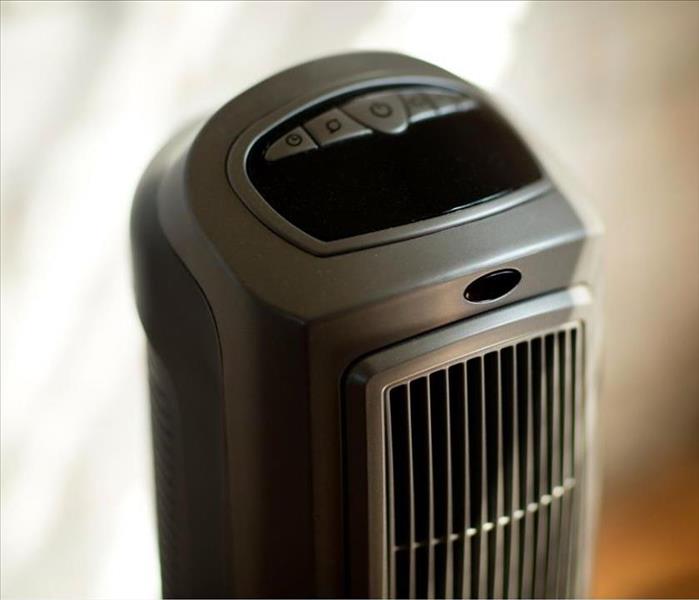 When using a space heater as a heating alternative it's important that you use it properly.
When using a space heater as a heating alternative it's important that you use it properly.
In Iowa, Mid-American Energy Co. stated that this coming winter might have higher bills than previous years. The energy company said that natural gas will rise 46% to 96% from a year earlier. Consumers who use propane to heat their homes should expect their heating costs to grow 69% over last year. Consumers will more than likely have to look at heating alternatives to try, and we want to provide some tips, so you start a fire.
Dangers of Space Heaters
The Consumer Product Safety Commission has said that space heaters are the leading cause of thousands of house fires each year in the United States. When using space heaters as a heating alternative, you have to ensure that your using them correctly, especially if you live in an apartment or condo.
- Space heaters stay on the ground.
When it’s cold outside, all we want to do is stay inside and stay warm. This desire to feel warm is what gets many people in trouble when using space heaters. A lot of people will place the heater so that it blows directly on them. This is problematic as you put the heater in a position that it could heat up anything in a 3-foot radius of it. By keeping the space heater on the ground, you ensure that it doesn’t heat any flammable material/ fabric.
If you missed the electricity lesson from school, long story short, electricity and
water don’t go together. As you place the heater, you will want to ensure that it is on the ground, preferably not in the kitchen or bathroom.
- Plug directly into the wall:
Many space heaters cause fires when the consumer starts to plug them into an extension cord. Cords aren’t ideal because most times, people will try and cover them with a rug. When someone adds an extension cord into the mix, it puts extra electrical connections, which increases your chance of creating resistances. When you create a significant resistance, the more heat and now the rug you just placed on top is getting heated. The space heater should be placed in a 3-foot radius away from any material or the wall.
With the projected increase in natural gas costs this winter, we know consumers might invest their money into heating alternatives. We just ask that you safely use the product to ensure that it doesn’t create a fire.
Winter Fire Prevention Checklist
11/12/2021 (Permalink)
 Have you completed your winter fire prevention checklist?
Have you completed your winter fire prevention checklist?
As the snow begins to fall in Missouri, we all must prepare our homes for the wintertime. It doesn't matter if you are ready for winter or not; it's here. Follow these easy steps, and you will ensure that you take the first step into winter correctly.
- Turning off the space heater
As the utility bills are estimated to rise this winter, many consumers will be looking at heating alternatives to help save some money. If you want to read more about the tips for using a space heater correctly, feel free to read our previous blog, Proper Ways to Use a Space Heater.
- Cutting the bottom of the Christmas Tree
As many people prepare to follow the tradition of getting hot chocolate and loading up the car to bear the cold to find the perfect Christmas tree, we'd like to remind you to cut the bottom of the trunk off. A pine tree begins to dry out if it can't absorb water from the tree base, and since the tree has been cut for some time, the bottom has sealed the trunk so no water can be absorbed. By cutting the tree's trunk, you ensure that the tree doesn't become an easy fire hazard.
With the new seasonal scents coming out, many people are burning their favorite fall/winter scents. With it getting dark out sooner, people are burning their candles longer than usual, making it easier to forget about. Forgetting to blow out a candle is a quick way to have a fire problem, especially when you have pets. Cats, in particular, are very peculiar, and they love to knock things off the counter. When you light a candle, you will want to ensure that there isn't anything flammable within 3 feet of the burning candle.
People don't consider the last time they had their chimneys cleaned, and when it sits uncleaned, and you begin to use them, it might release toxic gases. I'm not sure about you, but I don't like the sound of having toxic gases flowing into my home, where my family is at.
By implementing these tips, you are ensuring that you are being protective about the upcoming winter season. We wouldn't want the winter coldness to become the least of your worries. Follow these tips, and you will have a safe winter season.
Let’s Be Smart As We Fry Turkey
11/12/2021 (Permalink)
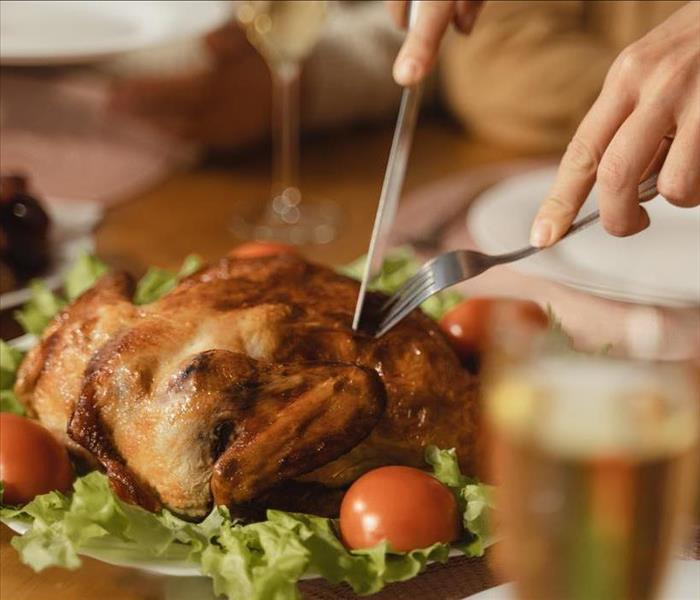 Turkey is the staple of every Thanksgiving Day dinner, don't let a fire ruin that.
Turkey is the staple of every Thanksgiving Day dinner, don't let a fire ruin that.
With Thanksgiving in two weeks here at SERVPRO, we want to help ensure your Thanksgiving Turkey won’t go up in flames. According to the National Fire Prevention Association, a turkey had been associated with about 900 fires each year on average frying.
Preparations Begin BEFORE You Start
The biggest takeaway from this article should be:
- NEVER fry a frozen turkey; in fact, preparations to get all moisture should begin right now.
- When setting up the unit, you will want to place it on a flat surface free from anything covering it. Don’t fry your turkey in the garage, as it could catch your house on fire.
- Don’t overfill the fryer with oil, as you should take into account the weight of the turkey. If the oil spills out the side could mean a quick way of starting a fire.
Preparations DURING the Frying Process
These are a few tips that you should take into account as you fry the turkey:
- When lowering the turkey into the oil, you should do it in slow-motion if you need to pull it out fast.
- Once the turkey is in, you will need to stay with it. No time to get another beer as things can go south fast if left unattended. The oil will continue to get hotter, and if alone, you could let it reach 450?, which is when oil starts to smoke.
- If you see the smoke coming from the unit, you SHOULD TURN OFF THE GAS.
- When the dark meat is cooked, the thermostat reads 175-180?, and the white meal is at 165-170?.
Gobble Gobble Time
From our family here at SERVPRO of East Independence/Blue Springs to yours, we hope you have a fun and safe Thanksgiving.
Content Cleaning After a Fire in East Independence
9/20/2021 (Permalink)
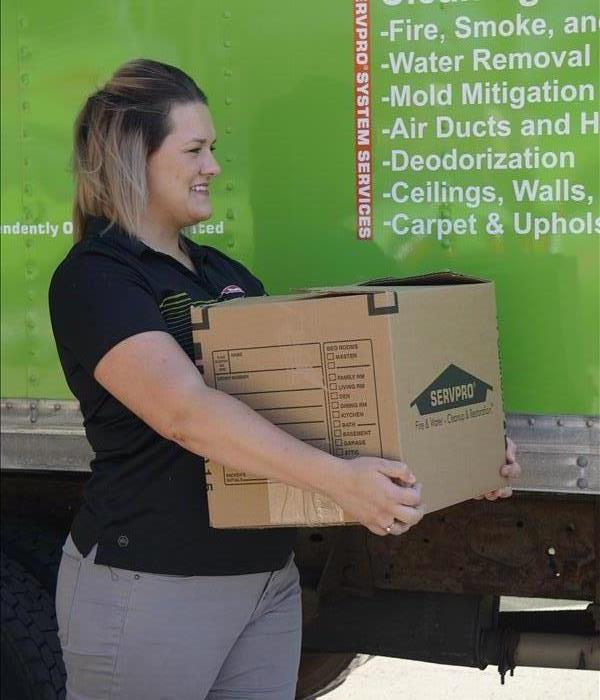 Our packing process ensures that all the salvageable items are properly and safely organized for our staff to come in and do content cleaning.
Our packing process ensures that all the salvageable items are properly and safely organized for our staff to come in and do content cleaning.
When completing mitigation for a fire, content cleaning is an integral piece of the process that restores sentimental items. The process of content cleaning begins with a pack-out that secures all the items from further damage. The pack-out is completed with an inventory, so our team knows what is in every box and what cleaning is needed. This is done by segregating contents by location, room area, shelf, and drawers, etc., so everything can be organized accordingly. After all the contents are packed properly the cleaning process at the shop can begin. There are six categories of cleaning principles:
- Solvent Action
- Each solvent has its own unique ability to dissolve different substances.
- Chemical Reaction
- In this case, an acid combines with the oxidized metallic residue, and the resulting material is rinsed away.
- Lubrication
- Reducing friction between the surface and smoke residue.
- Agitation
- Utilizing some type of physical force to suspend soot residue.
- Temperature
- Higher temperatures speed chemical reactions, open surface pores on the finish being cleaned, and decrease drying times.
- Dwell Time of the Solution
- The amount of time a cleaning product is allowed to remain in contact with the contaminated surfaces.
This is then followed up with preconditioning, dry soil removal, or wet cleaning to get contents back to preloss conditions.
Identifying Smoke Odor and Residue Classifications
9/17/2021 (Permalink)
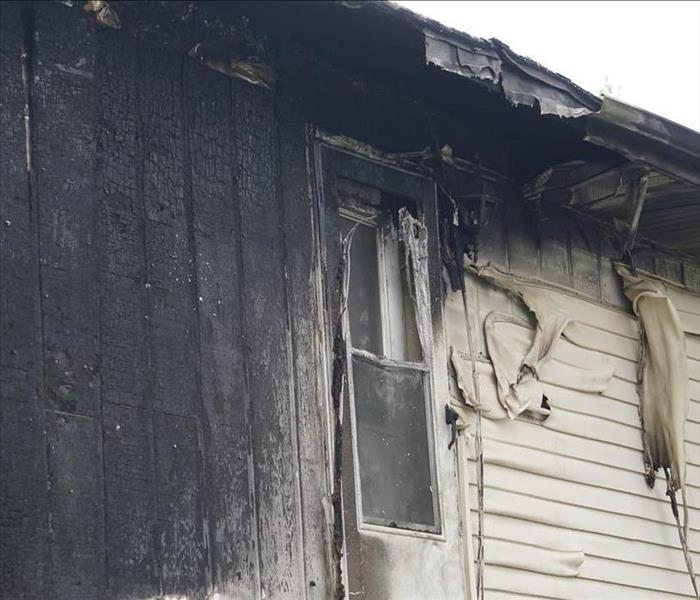 Fire damage can produce different types of residue, so our team is trained to clean all three types no matter the size of the job.
Fire damage can produce different types of residue, so our team is trained to clean all three types no matter the size of the job.
There are numerous items and situations that can set a fire and keep it ablaze. Different types of fires require separate cleaning methods to get the home back to preloss conditions. There are three general types of soot residues that are produced in a fire. This includes protein residues, natural substance odor and residue, and synthetic residue. To begin, protein residues are the result of burned foods like meat, fish, or beans, creating yellow to brown colors. The residue is greasy and requires water-based cleaning solutions. Next, natural substance odor and residue result from burned wood. These range from gray to black with a dry and powdery texture. This type of smoke residue is the easiest to clean and deodorize as it can be cleaned with a vacuum and other dry techniques. Lastly, there are synthetic residues that result from oil-based materials. like furniture, toys, and carpets. This residue is black and smeary which can also lead to smoke webs, and, thusly, more intensive cleaning methods. In the case of a fire, you can call on our team of professionals to help clean and restore your property after a fire.
Call SERVPRO of East Independence/Blue Springs for Residential Fire Damage Services
8/20/2020 (Permalink)
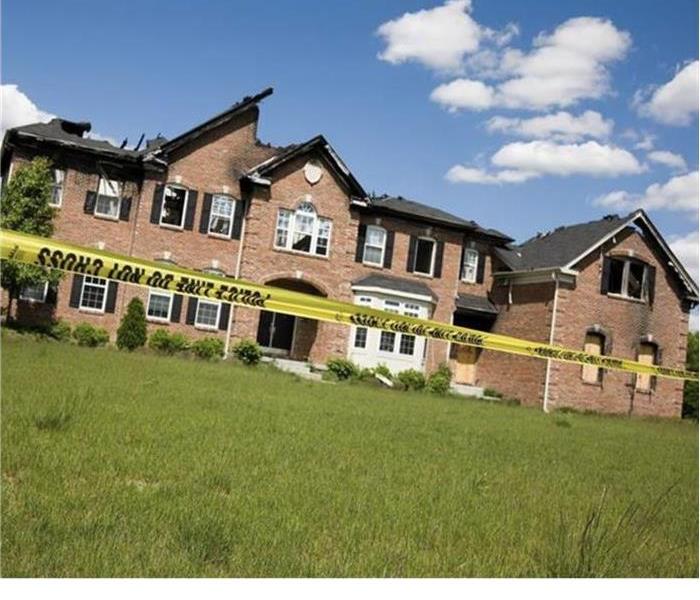 Here To Help
Here To Help
When you need residential fire damage services, you should contact a locally owned and operated professional that can quickly diagnose the exact nature of your problem and then get right to work on solving it. Fire and smoke are particularly destructive forces that can gut a structure and cause it to be condemned. If your property is suffering from this sort of damage, you may need immediate help to salvage it.
You'll Need a Company That Specializes in Fire Damage Restoration:
After any damage has occurred, you should contact a company immediately for an initial diagnosis. This will then be followed by a team getting directly to work on cleaning up and fully restoring the affected area. Cleanup, removal of debris, neutralization of remaining odors, and purifying of the air can commence quickly to prevent any further health problems that often arise after fire damage.
Concentrate on Restoration Rather Than Replacement:
The focus of good restoration service should always fixate on restoring your property rather than replacing it. When possible, it's better to isolate quickly and neutralize any issues rather than replacing your entire property. Restoration not only costs you less money in the long run, but it also allows you to quickly get back to living your life faster. If parts of the property do need to be completely rebuilt, talk to the company about timelines for the areas that are fixable first, and then concentrate on the areas that need to be entirely redone.
What to Expect From Any Service:
A reputable restoration service will do an immediate assessment of the damage, followed by board up and tarp service if required. From there, they will remove all affected material and begin airing out and drying the general area. Once all of the debris, smoke, and soot has been eliminated from the area, they can begin restoring your property back to pristine condition.
What to Look For:
It's best to hire a locally owned company that has a focus and connection to your community. You should also ensure that the service personnel you are dealing with are fully qualified, trained, and experienced at diagnosing and solving the problems that affect your property. When you are dealing with severe fire and smoke damage, you want to make sure the company you choose can handle the scope of the project and will help you handle any problems that come up.
SERVPRO of east Independence/Blue Springs is a locally owned and operated authority for residential fire damage cleanup and restoration. When fire damage threatens properties in the areas of our communities and the surrounding region, we can help. Contact us now for a prompt response to your fire damage emergency at (816) 224-5300.



 24/7 Emergency Service
24/7 Emergency Service







